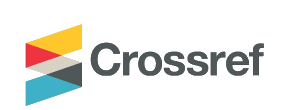Implication of public speaking anxiety on the employability of Omani graduates
DOI:
https://doi.org/10.21153/jtlge2019vol10no2art861Keywords:
public speaking anxiety, employability skills, exploratory factor analysis, OmanAbstract
The paper examines the implication of public speaking anxiety on the employability of Omani graduates. The study adopted a sequential, mixed research strategy, starting with in-depth interviews of teachers and managers in industry, followed by a structured questionnaire involving 200 students selected randomly from two colleges in Muscat. The statistical approach included exploratory factor analysis (EFA), and parametric tests. The study found that public speaking anxiety is widespread among students in higher education institutions in Oman, with a prevalence rate amounting to 55 percent, much higher compared to the rates reported globally. The main factors involving public speaking anxiety in these education institutes in Oman were attributed to self-confidence, foreign language anxiety, being unprepared or fear of talking in a foreign language, lack of experience, or forgetfulness/loss of memory. The implication of public speaking anxiety on employability of graduates in Oman is identified and some suggestions made based on the findings.
Metrics
References
Aida, Y. (1994). Examination of Horwitz, Horwitz and Cope’s construct of foreign language anxiety: The case of students of Japanese. The Modern Language Journal, 78, 155- 167.
Al harbi, H.A. (2015). Improving students English speaking proficiency in Saudi public schools. International Journal of Instruction, 8(1), 1308-1470.
Alamri, M. (2011). Higher education in Saudi Arabia. Journal of Higher Education Theory and Practice,11(4), 88-91.
Al-Mahrooqi, R. (2017,January). Omani public school supervisor evaluations of English communication in EFL classrooms. A paper for conference Pedagogia 2017. Retrieved from: https://www.researchgate.net/publication/313367554_ Omani_public_school_supervisor_evaluations_of_English_communication_in_EFL_classrooms
Al-Mahrooqi, R. & Denman C. (2016). Establishing a reading culture in Arabic and English in Oman. Arab World English Journal, 7, 5-17.
Al-Mahrooqi, R., Denman C. & Al-Maamari F. (2016). Omani school supervisor perspectives of contextual factors impacting upon students limited English proficiency: An exploratory study. International Journal for 21st Century Education, 3, 59-68.
Al-Mahrooqi, R. (2012). English communication skills: How are they taught at schools and universities in Oman? English Language Teaching, 5(4), 124-130.
American Psychiatric Association, 5th ed.(2013). Diagnostic and statistical manual of mental disorders . American Psychiatric Association.
Ansari, M. S. (2015). Speaking anxiety in ESL/EFL classrooms: A holistic approach and practical study. International Journal of Educational Investigations, 2(4), 38-46.
Ayres, J. (1986). Perceptions of speaking ability: An explanation for stage fright. Communication Education, 35, 275-287.
Ayres, J. & Hopf, T. S. (2009). Visualization: A means of reducing speech anxiety. Communication Education, 34(4), 318- 323.
Beidel, D., Turner, S., Stanley, M. & Dancu, C. (1989). The social phobia and anxiety inventory: Concurrent and external validity. Behavior Therapy, 20, 417-427.
Biggs, J. (2014). Constructive alignment in university teaching. HERDSA Review of Higher Education, 1, 5-22.
Brown, H. D. (1994) .Principles of language learning and teaching, (3rd edition).NJ: Prentice Hall.
Burnley, M., Cross, P., & Spanos, N. (1993). The effects of stress inoculation training and skills training on the treatment of speech anxiety. imagination, cognition and personality, 12(1),355-366.
Çagatay, S. (2015). Examining EFL students’ foreign language speaking anxiety: The case at a Turkish state university. Procedia – Social and Behavioral Sciences, 199(6), 648-656.
Campbell S. & Larson J. (2013). Public speaking anxiety: Comparing face to face and web based speeches. Journal of Instructional Pedagogies,1,1-8.
Campbell, C.(1999). Language anxiety in men and women: dealing with gender differences in the language classroom. In D., Young. Affect in foreign language and second language learning: A practical guide to creating a low anxiety classroom atmosphere, 191- 205, Boston: McGraw- Hill.
Carroll, M., Razvi, S., & Goodliffe (2009) .Using foundation program academic standards as a quality enhancement tool., A paper for INQAAHE 2009. Retrieved from: https://www.researchgate.net/publication/237725311.
Cheng, L. (2009). Language anxiety and English speaking proficiency.CA: Sage Publications.
Coleman, L.E. (2005). Drama-based English and foreign language instruction for Korean adolescents. Dissertation Abstracts International 66 (UMI 3184346).Retrieved from: https://www.researchgate.net/publication/261995985_ Drama_in_Oman_to_improve_English_proficiency_among_English_major_college_students
Coubs Jaclyn (2017). ESL International Students’ Perceptions of their Academic Readiness For Us Higher Education. Dissertation School of Education, School of Education. Retrieved from: https://digitalcommons.hamline.edu/cgi/viewcontent.cgi?article=5335&context=hse_all
Crookall, D. & Oxford, R. L. (1991). Dealing with anxiety: some practical activities for language learner and teacher trainees. In E.K. Horwitz & D.J. Young (Eds.). Language Anxiety: From Theory and Research to Classroom Implications. Englewood Cliffs, NJ: Prentice Hall. 141-50.
Dalkilic, N. (2001). An investigation into the role of anxiety on students' success in second language learning. Unpublished doctoral dissertation, Cukurova University.
Diao Zhiping & Shamala Paramasivam (2013). Anxiety of Speaking English In Class Among International Students In A Malaysian University. International Journal of Education and Research,1(11),1-16.
Dunbar, N.E., Brooks, C.F. & Kubicka-Miller, T (2006). Oral communication skills in higher education: Using a performance-based evaluation rubric to assess communication skills., Innovative Higher Education, 31(2),115-128.
Dupagne, M., Stacks, D. W., & Giroux, V. M. (2006). Effects of video streaming technology on public speaking students, communication apprehension and competence. Journal of Educational Technology Systems, 35(4),479-490.
Dwer, K. & Davidson, M. (2012). Is public speaking really more feared than death? Research Reports, 20(2). 99-107.
Eharman, M. (1996). Understanding second language learning difficulties. London: Sage Publications INC.
Eleldi, S. (2016). Foreign language anxiety of students studying English language and literature: a sample from Turkey. Academic Journals, 11(6), 219-228.
England, E.L., Herbert, J.D., Forman, E.M., Rabin, S.J., Juarascio, A., & Goldstein, S.P. (2012) Acceptance-based exposure therapy for public speaking anxiety. Journal of Contextual Behavioural Science, 1, 66-72.
Fariadian, E., Azizifar, A., & Gowhary, H. (2014). The effect of anxiety on Iranian EFLlearners speaking skill. International Research Journal of Applied and Basic Sciences, 8 (10), 1747-1754.
Gargalianou, V. (2015). The effects of gender and personality on foreign language anxiety among adult multilingual. Belgium: university of Antwerp, SCHUMPETER School of Business and Economics.
Goberman, A.M., Hughes, S., & Haydock, T. (2011) .Acoustic characteristics of public speaking: anxiety and practice effects. Speech Communication, 53(6), 867-876.
Hair, J.F., Black, W.C., Babin, B.J., & Anderson, R.E. (2010). Multivariate Data Analysis. Seventh Edition. Prentice Hall, Upper Saddle River, New Jersey
Hwa, S. P. (2014). The impact of gender on speaking anxiety among Malaysian tertiary ESL learners. Malaysia: University of Tunku Abdul Rahman.
Klaus, P. (2010). Communication breakdown. California Job Journal, 28(1), 1-9.
Knappe, S., Beesdo-Baum, K., Fehm, L., Stein, M.B., Lieb, R. & Wittchen, H.U. (2011). Social fear and social phobia types among community youth: Differential clinical features and vulnerability factors. Journal of Psychiatric Research, 45, 111-120.
Leary, M. R. (1983). A brief version of the fear of negative evaluation scale. Personality and Social Psychology Bulletin, 9, 371-376
.
Liu, M. (2006). Anxiety in Chinese EFL students at different proficiency levels. System, 34(3), 301-316.
McConnell, C.R. (2009) .Effective oral presentations: Speaking before groups as part of your job. The Health Care Manager, 8(3), 264-272.
McCroskey, J. C. (1982). Oral communication apprehensive: A reconceptualization, In Michael Burgoon (Ed.), Communication yearbook, 6(1) 271- 294, CA: Sage Publications.
Motley, M.T. (1997). Overcoming your fear of public speaking: A proven method. University of California, CA: Davis Houghton Mifflin Company.
National Center for Statistics and Information (2018). Statistical Year Book issue 46-2018. Oman. National Center for Statistics and Information.
Occhipinti, L. (2009). Foreign language anxiety in in-class speaking activities. Journal of Communications, 11(3), 1-112.
Paadi, K.(2014) .Perceptions on employability skills necessary to enhance human resource management graduates prospects of securing a relevant place in the labour mark. European Scientific Journal, Special Edition, 129-143.
Pappamihiel, N.E. (2001). Moving from the ESL classroom into the mainstream: An investigation of English language anxiety in Mexican girls. Bilingual Research Journal, 25, 31-38.
Pertaub, D. P., Slater, M. & Barker, C. (2006). An experiment on fear of public speaking in virtual reality. CyberPsychology & Behavior, 9(5), 627-33.
Piechurska-Kuciel, E. (2012). Gender-dependent language anxiety in Polish communication apprehensive. Studies in Second Language Learning and Teaching , 2 (2), 227-248.
Polziehn, R. (2011, January) .Skills expected from graduate students in search of employment in academic and nonacademic settings: A report retrieved from: https://d1pbog36rugm0t.cloudfront.net/-/media/gradstudies/migrated- media/prof dev/career/careerskillsexpected.pdf
Rabab, G. (2002) .Communication problems facing Arab learners of English. Journal of Language and Learning, 3, 80–197.
Rafada, S. H. & Madini, A. A. (2017). Major Causes of Saudi learners' speaking anxiety in EFL classrooms. International Journal of English Language Education, 5(1).
Ruscio, A.M., Brown, T.A., Chiu, W.T., Sareen, J., Stein, M.B., & Kessler, R.C. (2008). Social fears and social phobia in the USA: Results from the national comorbidity survey replication. Psychological Medicine, 38(1), 5-28.
Russell, G. & Shaw, S. (2009). A study to investigate the prevalence of social anxiety in a sample of higher education students in the UK. Journal of Mental Health, 18(3), 198–206.
Schneier, F.R., Johnson, J., Hornig, C.S., Liebowitz, M.R., & Weissman, M.M. (1992). Social phobia. comorbidity and morbidity in an epidemiologic sample, Archives of General Psychiatry, 49(4), 282-288.
Schreiber, L. M., Paul, G. D. and Shibley, L. R. (2012) .The development and test of the public speaking competence rubric. Communication Education, 61(3), 205–233.
Selvadurai, S., Choy, E.A., & Maros, M. (2012). Generic skills for prospective graduates from employers' perspectives. Asian Social Studies, 8(12), 295-303.
Slavica, C. (2016). Causes of business English speaking anxiety in the Balkans, Journal of English studies, 14, 73-93.
Stein, M.B., Walker, J.R., & Forde, D.R. (1996) .Public speaking fears in a community sample: Prevalence, impact on functioning, and diagnostic classification. Archives of General Psychiatry, 53, (2), 169-174.
Strahan, E. (2003). The effects of social anxiety and social skills on academic performance. Personality and Individual Differences, 34, 347-366.
Strahan, E. & Conger, A.J., (1998). Social anxiety and its effects on performance and perception. Journal of Anxiety Disorders, 12(1), 293-305.
Sung J., Michael, C., Loke, F. & Ramos, C. (2013). The nature of employability skills: Empirical evidence from Singapore, , Special Issue on Employability Skills, International Journal of Training and Development, 17(3),176-193
Tillfors, M. & Furmark, T. (2007). Social phobia in Swedish university students. Social Psychiatry and Psychiatric Epidemiology, 42(1), 79–86.
Tanveer, M. (2007). Investigations of the factors that cause language anxiety for ESL/EFLlearners in learning speaking skills and the influence it casts on communication in the target language. Unpublished master’s thesis, University of Glasgow, Scotland
Torres, R. L. (2006). Gender and anxiety among international high school second language learners. Journal of Border Educational Research, 5, 6-13.
Tse, A.Y.H. (2012). Gloss phobia of university students in Malaysia. International Journal of Asian Social Science, 2(11), 2061-2073.
Wilhelm, W. J. (2004). Determinants of moral reasoning: Academic factors, gender, richness of life experiences, and religious preferences.. Delta Pi Epsilon Journal, 46, 105-121.
Wilson, J. T. S. (2006). Anxiety in learning English as a foreign language; its associations with students’ variables, with overall proficiency, and with performance in an oral test. PhD Thesis, LA Director, Universidad De Granada.
World Economic Forum (2017). The global competitiveness report 2015–2016. Retrieved from: http://reports.weforum.org/global-competitiveness-report-2015-2016/results-overview.
Yalçın, O. A & İnceçay, V .(2013,February). Foreign language speaking anxiety: The case of spontaneous speaking activities., 5th World Conference on Educational Sciences – WCES 2013 Procedia - Social and Behavioral Sciences, 116 (2014), 2620–2624. Retrieved from: www.sciencedirect.com.
Yorke, M. (2006). Employability in higher education: what it is – what it is not? Learning and employability. Series 1. York: The Higher Education Academy. Retrieved from: http://www.heacademy.ac.uk/assets/documents/tla/employability/id116_employability_ in_higher_education_336.pdf.
Young, D. J. (1990). An investigation of students’ perspectives on anxiety and speaking. Foreign Language Annals, 23(6), 539-553.
Zughoul, M. (1987). Restructuring the English department in the Third World universities: Alternative approach for the teaching of English literature. International Review of Applied Linguistics in Language Teaching, 25(3), 221– 36.










